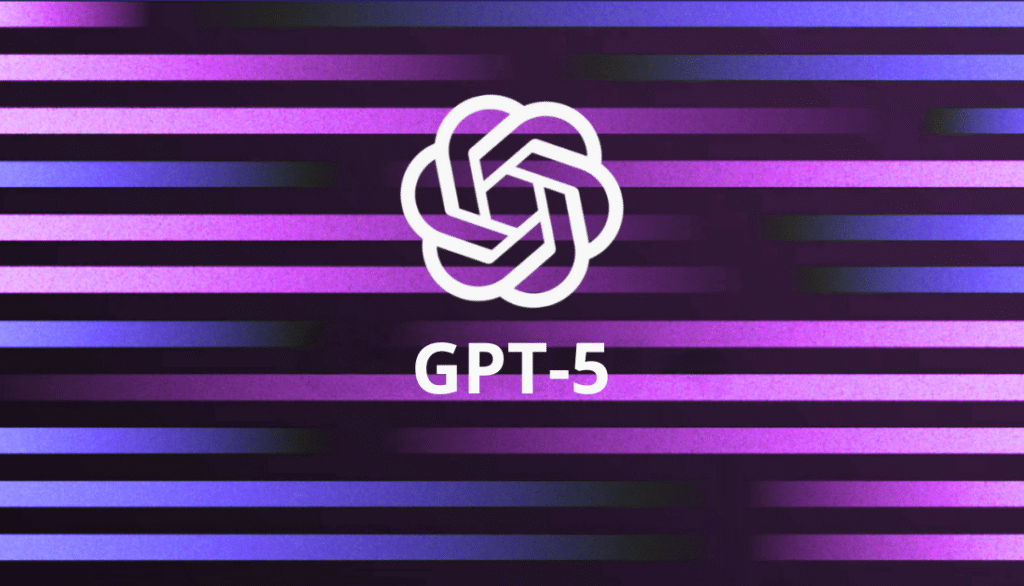OpenAI has officially introduced GPT-5, its latest flagship AI model. This release represents a shift in the company’s approach — moving from traditional chatbots toward AI systems that operate more like autonomous agents.
Highlights
- Unified Model: GPT-5 merges the deep reasoning power of the o-series with the conversational speed of GPT, becoming OpenAI’s first all-in-one AI system.
- Agent Capabilities: Goes beyond answering questions — can build apps, organize schedules, write research briefs, and handle multi-step workflows autonomously.
- Adaptive Response System: Real-time router decides between quick replies and extended reasoning, eliminating manual settings.
- Free Tier Upgrade: Advanced reasoning is now available to all ChatGPT free users, with higher usage for Plus and unlimited access for Pro subscribers.
- Developer API: Available in gpt-5, gpt-5-mini, and gpt-5-nano, with new verbosity controls and pricing from $1.25 per million input tokens.
- Benchmark Wins: Leads competitors in SWE-bench Verified (74.9%) and GPQA Diamond (89.4%), with major reductions in hallucinations across domains.
- Safety Upgrades: More transparent about limitations and better at differentiating harmful from harmless queries.
- Custom Conversation Styles: Supports Cynic, Robot, Listener, and Nerd modes for tone personalization.
- Extended Task Endurance: Maintains accuracy for up to 2 hours 15 minutes in complex software engineering workflows.
- Tool Integrations: Works seamlessly with Gmail, Google Calendar, and Drive without manual activation.
- Enterprise Adoption: Used by organizations like SAP for policy-compliant analysis, logistics, and code modernization via Azure AI Foundry.
- Open-Source Expansion: Launched alongside gpt-oss, an open-weight reasoning model for local developer use.
GPT-5 is the company’s first unified model, combining the advanced reasoning of its o-series with the quick, conversational style of the GPT series. It is now the default ChatGPT model for all free users, making high-level reasoning capabilities more widely accessible.
From Chatbot to AI Agent
While GPT-4 excelled at providing answers across a wide range of queries, GPT-5 is designed to take action on behalf of users. It can:
- Build complete software applications
- Organize calendars and schedules
- Prepare research briefs
- Handle complex, multi-step workflows with minimal user input
A new real-time router determines whether to respond instantly or take additional time for deeper reasoning — removing the need for manual setting changes.
Accessibility and Pricing
For the first time, free ChatGPT users can access an advanced reasoning model.
- Plus subscribers ($20/month) get higher usage limits.
- Pro subscribers ($200/month) have unlimited access to GPT-5 and its higher-compute version, GPT-5 Pro.
- Enterprise, Team, and Education customers will transition to GPT-5 next week.
On the developer side, GPT-5 is available via the API in three sizes — gpt-5, gpt-5-mini, and gpt-5-nano — with pricing starting at $1.25 per million input tokens and $10 per million output tokens. Developers can now also control verbosity for the first time.
Performance Benchmarks
Independent tests place GPT-5 among the strongest AI models currently available, though not without competition.
- Coding: Scored 74.9% on SWE-bench Verified — ahead of Anthropic’s Claude Opus 4.1 (74.5%) and Google DeepMind’s Gemini 2.5 Pro (59.6%).
- Science Knowledge: On GPQA Diamond, GPT-5 Pro reached 89.4%, slightly above Grok 4 Heavy (88.9%).
- Medical Reliability: Reduced hallucinations on HealthBench Hard Hallucinations to 1.6% — a substantial drop from GPT-4o’s 12.9%.
- General Prompts: Hallucination rates lowered to 4.8%, down from 20%+ in o-series models.
Not all results were top-ranked. On Humanity’s Last Exam, GPT-5 Pro scored 42%, slightly below Grok 4 Heavy’s 44.4%. In Tau-bench agent tasks, it excelled in retail site navigation (81.1%) but scored lower in airline site navigation (63.5%).
Safety, Accuracy, and Tone
- Less prone to deceptive behavior than earlier reasoning models
- Better at distinguishing between harmful misuse and harmless requests
- More transparent about limitations — in testing, GPT-5 correctly acknowledged when it lacked enough information in 91% of cases, compared to o-series models that often speculated inaccurately
GPT-5 also supports four optional conversation styles — Cynic, Robot, Listener, and Nerd — allowing users to adjust tone without special instructions.
Endurance in Complex Tasks
Independent evaluations estimate GPT-5’s “time horizon” — its ability to sustain accuracy in extended tasks — at about 2 hours and 15 minutes for complex software engineering projects. This suggests reliability in longer developer workflows.
Integrations and Personalization
GPT-5 can work contextually with tools like Gmail, Google Calendar, and Google Drive without requiring manual activation. This deeper integration aims to create a more seamless assistant experience.
Enterprise Applications
Organizations are already deploying GPT-5 as an enterprise AI agent. For example, SAP is using it through Microsoft Azure AI Foundry for,
- Policy-governed financial and legal analysis
- Due diligence and logistics
- Code modernization
- Audit-friendly, tool-orchestrated workflows
Marketing and analytics platforms report that GPT-5’s adaptive routing adjusts responses to task complexity — quick answers for simple queries, deeper reasoning for technical or brand-sensitive ones.
It also comes alongside the release of gpt-oss, an open-weight reasoning model available for developers to run locally.


